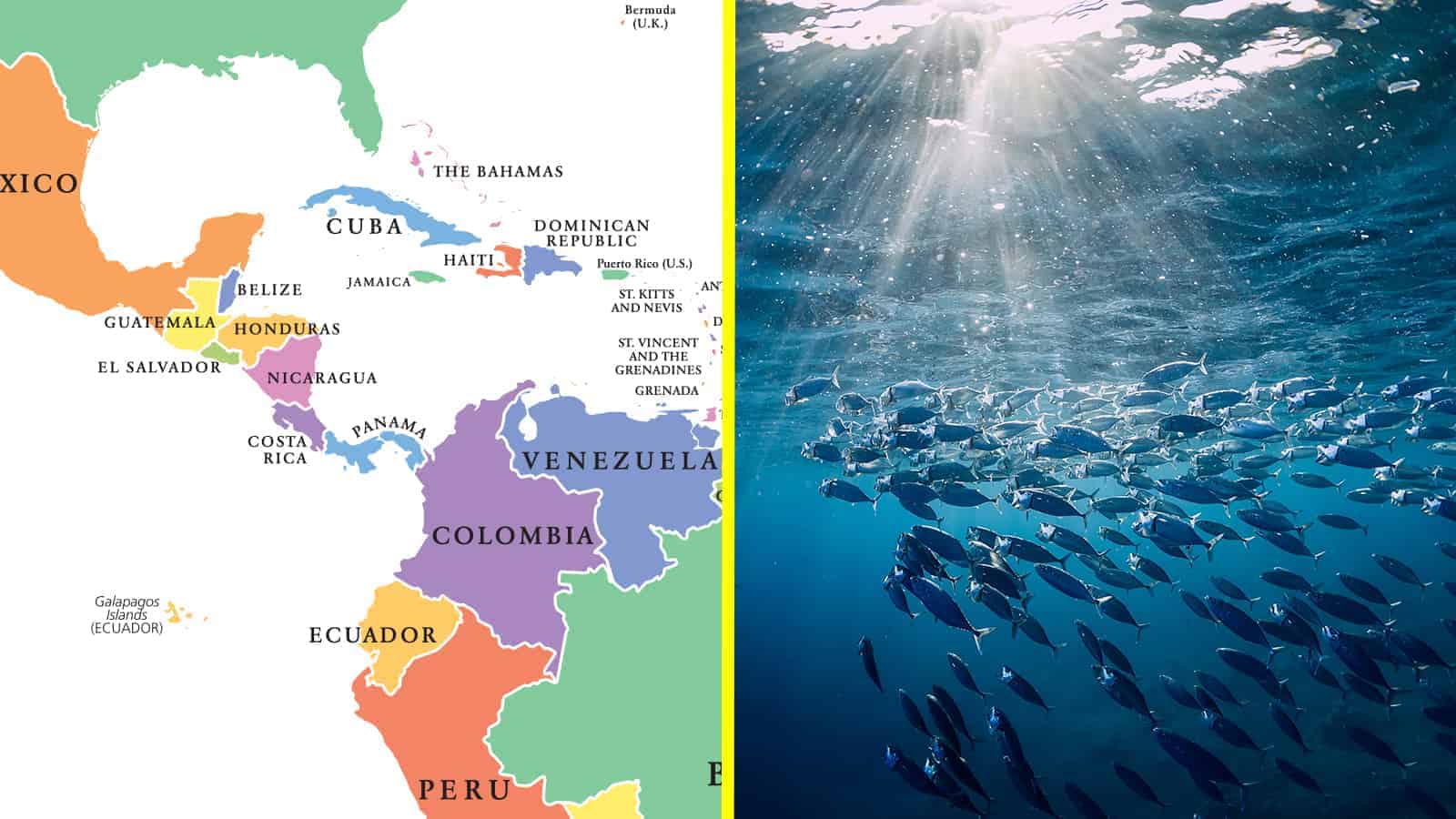Four Latin American countries bordering the Pacific Ocean have signed a massive marine protection agreement. Earlier this month, Ecuador, Panama, Colombia, and Costa Rica combined their marine reserves to create a vast protected corridor in the Pacific. This agreement will help protect and restore the ocean’s rich biodiversity and prevent overfishing.
Called the Eastern Tropical Pacific Marine Corridor (CMAR) initiative, the protected area will cover over 200,000 sq miles of territorial waters. The interconnected area includes the Galapagos Islands, Colombia’s Malpelo Island, and the Cocos and Coiba Islands in Costa Rican and Panamanian waters. Officials hope to protect the delicate marine life in the area, including squid, tuna, hammerhead sharks, and sea turtles.
Other animals migrate thousands of miles through this corridor each year, such as whales, sharks, and stingrays. The no-fishing zone would ensure the protection of these species as well. These waters teeming with life attract foreign fishing companies and local fisheries each year. Unfortunately, it’s easy to get away with illegal, unregulated fishing on the high seas. Tired of seeing their precious waters exploited for profits, the Latin American countries decided to take action.
The president of Colombia, Iván Duque, announced the marine protected area at Cop26 in Glasgow. He revealed that the nation’s reserved area would expand 160,000 sq km, in addition to the already-protected 120,000 sq km.
The previous day, Ecuador’s president, Guillermo Lasso, announced the Latin American protection zone. He said the current 133,000 sq km Galápagos marine reserve would expand by 60,000 sq km. Lasso said it’s long overdue for countries to act instead of talking about plans.
So, he believes the marine protected area serves as an essential step in the right direction.
Four Latin American Countries Agree to Marine Life Protection Rules
It comes as a mutual agreement between the Ecuadorian government as well as local and commercial fishers. After five months of discussion and deliberation, they came to a unanimous decision to preserve marine life. Perhaps more countries will decide to protect their oceans due to a good example set by Ecuador.
Lasso added that the plan to expand protected marine areas came as a result of increased fishing. As more industrial fleets encroached upon the territory, it became clear that the Latin American countries had to draw boundaries. He said the expansion required massive debt for conservation, but it’s worth it to protect priceless ecosystems.
How These Nations Worked Together to Protect Marine Life
The four Latin American countries have been trying to create a fishing-free corridor in the eastern Pacific since 2004. That year, Panama, Colombia, Costa Rica, and Ecuador signed an agreement to protect their Pacific island territories. Since then, the countries have reserved marine areas around the Galapagos, Malpelo, Cocos, and Coiba islands. Not many people live on these islands, but an abundance of marine and bird species call them home.
Ecuador’s environment minister Gustavo Manrique says the no-fishing zone creates a “safe swim way” between Ecuador and Costa Rica. Important endangered migratory animals like whales, manta rays, turtles, and sharks travel these waters each year. Even though fishing generates significant profits for developing Ecuador, they’ve still committed to decreased fishing, added Gustavo. He said that the new marine corridor marks the first time countries with connected borders joined forces for global conservation.
The expanded Galápagos protected area would include two separate fishing-free zones. The first area would reserve 30,000 sq km northeast of the Galápagos Islands, where Ecuador and Costa Rican waters converge. The proposed mega marine protection area includes underwater seamounts of the Cocos Ridge, where many species migrate. The second area would protect an additional 30,000 sq km around the existing Galápagos marine reserve.
Protecting Wildlife a Top Priority for Latin American nations
To assist the Latin American countries’ efforts to protect marine ecosystems, the CAF Development Bank of Latin America donated $1 million. The CMAR agreement is part of a global, UK-led effort to conserve 30% of the world’s oceans and land by 2030. Each country that signed the CMAR also joined the “30×30” movement, with Colombian President Duque aiming to meet this goal by 2022.
In June, Panama expanded the Cordillera de Coiba marine protected area from about 17,220 sq km to 98,230 sq km – a four-fold increase. Hopefully, all maritime countries will follow suit to reduce overfishing and preserve marine biodiversity. Billions of people rely on fishing to survive, but it’s crucial to consume resources in an eco-friendly, sustainable way. By reducing commercial fishing and restoring local economies, depleted fish stocks would have a chance to regenerate.
While the agreement signifies progress for Earth’s oceans, we still have a lot of work ahead of us. This century has plummeted in populations of migratory species like turtles, rays, and sharks, especially the hammerhead shark. Hammerhead sharks migrate to breed in waters surrounding the Galápagos’s Darwin and Colombia’s Malpelo islands.
Unfortunately, they’re vulnerable to overfishing due to their valuable, large fins. According to Oceana, over 90% of hammerheads die once fisheries capture them, whether intentionally or not. Because of the high mortality rate, Eastern Pacific populations are endangered. However, the new marine protected area should help the hammerheads make a comeback.
Latin American nations show the world that we can’t protect our planet without a collective effort. However, by taking immediate actions to reduce our impact and allow life to flourish, we can restore ecological balance.

Final Thoughts on How Eastern Tropical Pacific Marine Corridor Helps Protect Marine Life
Without healthy oceans, we can’t survive on this planet. Luckily, Latin American countries have led the way in protecting our oceans so all life can thrive. Recently, they signed a collective agreement to reserve an additional 200,000 sq km of Pacific waters. This area is targeted by commercial and local anglers because of its rich biodiversity and large fishing stocks.
However, now that it is deemed a no-fishing zone, the endangered species living here can begin to repopulate. If we can reserve 30% of our oceans by 2030, it will lower the stress on marine animals and help restore balance to the planet.
;



















